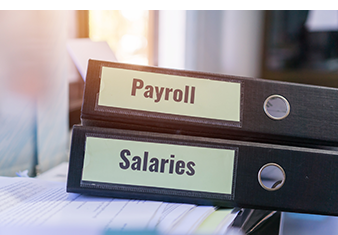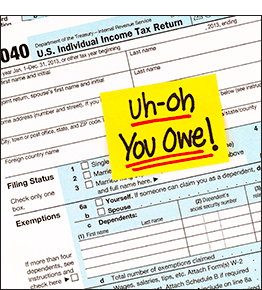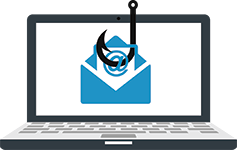If you or your business received funds from the Paycheck Protection Program (PPP), the recently passed Emergency Coronavirus Relief Act of 2020 will help to dramatically cut your tax bill. Here’s what you need to know.
Background
 The PPP program was created by the CARES Act in March 2020 to help businesses which were adversely affected by the COVID-19 pandemic. Qualified businesses could apply for and receive loans of up to $10 million. Loan proceeds could be used to pay for certain expenses incurred by a business, including salaries and wages, other employee benefits, rent and utilities.
The PPP program was created by the CARES Act in March 2020 to help businesses which were adversely affected by the COVID-19 pandemic. Qualified businesses could apply for and receive loans of up to $10 million. Loan proceeds could be used to pay for certain expenses incurred by a business, including salaries and wages, other employee benefits, rent and utilities.
If the business used at least 60% of loan proceeds towards payroll expenses, the entire amount of the loan would be forgiven.
The Dilemma
While the CARES Act spelled out that a business’s forgiven PPP loan would not be considered taxable income, the legislation was silent about how to treat expenses paid for using PPP loan proceeds if the loan was ultimately forgiven.
Congress intended for these expenses to be deductible for federal tax purposes. But since the legislation was silent on this issue, the IRS swooped in and deemed these expenses to be nondeductible.
There was considerable debate over the latter half of 2020, with Congressional politicians explaining that their intent was that the expenses be deductible and the IRS responding “Too bad, they’re nondeductible.”
The Solution
Congress overruled the IRS’s position in the Emergency Coronavirus Relief Act of 2020. The legislation officially makes deductible for federal tax purposes all expenses paid for using proceeds from a forgiven PPP loan.
Stay tuned for updates as to how this new legislation affects your business.


 No one likes surprises from the IRS, but they do occasionally happen. Here are some examples of unpleasant tax situations you could find yourself in and what to do about them.
No one likes surprises from the IRS, but they do occasionally happen. Here are some examples of unpleasant tax situations you could find yourself in and what to do about them. Here’s a quick look at the basic requirements to be able to deduct your home office expenses, along with some suggestions for how to qualify for the deduction if you’re currently working for your company as an employee.
Here’s a quick look at the basic requirements to be able to deduct your home office expenses, along with some suggestions for how to qualify for the deduction if you’re currently working for your company as an employee. The IRS recently announced its 2020 edition of its annual Dirty Dozen list of tax scams with a special emphasis on aggressive and evolving schemes related to COVID-19 tax relief, including Economic Impact Payments. Here are six of the more common scams.
The IRS recently announced its 2020 edition of its annual Dirty Dozen list of tax scams with a special emphasis on aggressive and evolving schemes related to COVID-19 tax relief, including Economic Impact Payments. Here are six of the more common scams. In 2018, the government attempted to “simplify” the tax-filing process by drastically shortening Form 1040. The result was six new schedules that created a lot of confusion. Now the IRS is attempting to ease some of that pain by revising the form and removing some schedules. Will it help? Here is what you need to know:
In 2018, the government attempted to “simplify” the tax-filing process by drastically shortening Form 1040. The result was six new schedules that created a lot of confusion. Now the IRS is attempting to ease some of that pain by revising the form and removing some schedules. Will it help? Here is what you need to know:
 Sleuthing your way through a tax audit by yourself is not the same as fixing a leaky faucet or changing your oil. Here are reasons you should seek professional help as soon as you receive a letter from the IRS:
Sleuthing your way through a tax audit by yourself is not the same as fixing a leaky faucet or changing your oil. Here are reasons you should seek professional help as soon as you receive a letter from the IRS: Getting audited by the IRS is no fun. Some taxpayers are selected for random audits every year, but the chances of that happening to you are very small. You are much more likely to fall under the IRS’s gaze if you make one of several common mistakes.
Getting audited by the IRS is no fun. Some taxpayers are selected for random audits every year, but the chances of that happening to you are very small. You are much more likely to fall under the IRS’s gaze if you make one of several common mistakes. Is a worker an independent contractor or an employee? This seemingly simple question is often the contentious subject of IRS audits. As an employer, getting this wrong could cost you plenty in the way of Social Security, Medicare, and other employment-related taxes. Here is what you need to know.
Is a worker an independent contractor or an employee? This seemingly simple question is often the contentious subject of IRS audits. As an employer, getting this wrong could cost you plenty in the way of Social Security, Medicare, and other employment-related taxes. Here is what you need to know.